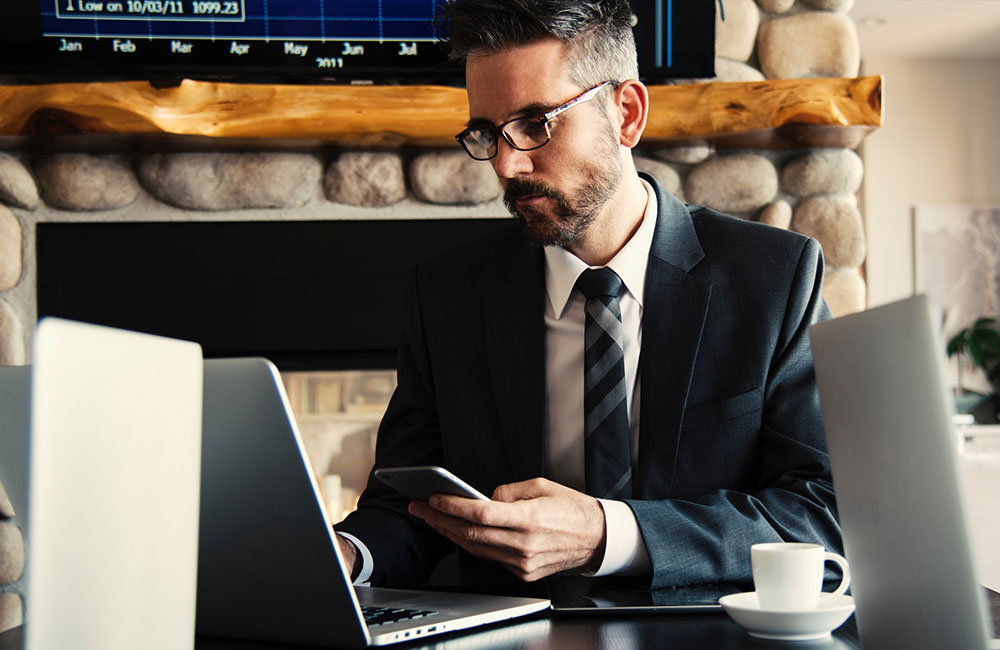By Edwin Hong, Esq.
With today’s smartphones being thousands of times faster than Apollo 11’s computers, it is time that the legal profession reconsiders its practices in the digital world. Gone are the days of Shepardizing cases manually, or handing a summons and complaint to a runner to file at the clerk’s office. Such things have become seamlessly integrated with emerging technologies, with legal research platforms facilitating single-click case searches and e-filing agencies submitting briefs to the court without delay. The constant evolution of the digital age allows attorneys to practice law in a much more efficient and practical way, and it is time that these methods were adopted. Litigation in the Digital Age is different than it used to be.
As the legislature and Judicial Council gradually adopt laws that account for new technologies, law firms are primed to take advantage of all there is to offer.
Electronic Service and E-Filing Jurisdictions
The California Rules of Court mandate the electronic service and acceptance of documents in mandatory e-filing jurisdictions. (see California Rules of Court, Rule 2.251(c)(3)) For civil cases, this includes Fresno County, Los Angeles County, Orange County, and many more.
In short, unless otherwise excluded from this rule, parties must serve and accept service of documents electronically in all mandatory e-filing jurisdictions (i.e. service via email). The various stay-at-home and shelter-in-place orders have made one thing very apparent: electronic service is a completely legitimate and feasible method for litigants to serve one another.
In the last several months, plaintiff and defense firms alike have been quarantined at their home offices. Despite this change in procedure, litigation has moved forward, with parties otherwise stipulating to electronic service of documents and proceeding to email service of amended complaints, written discovery, motions, deposition notices, and more. The Courts have also taken major steps in adopting electronic service of documents. For some time now, the Orange County Superior Court has emailed notices and minute orders to parties, with other counties beginning to follow suit.
In light of the COVID-19 pandemic, the Judicial Council had adopted Emergency Rule 12. This further mandated that any party represented by counsel (who has appeared in an action or proceeding) must accept electronic service of a document or notice that may be served by mail, express mail, overnight delivery, or facsimile transmission, after confirming the appropriate electronic service address. Though this rule remains in effect only 90 days after the Governor declares lifting the state of emergency due to COVID-19, it confirms the spirit of the existing Rule of Court and evolution of technology: that parties can, should, and often must accept electronic service.
Email service carries many benefits which outweigh the use of the traditional mailing of documents. While the service facilitates an instantaneous delivery, it can also be delayed and timed at the sender’s request. Many email services allow the senders to request an acknowledgment of receipt. Additionally, service by email allows recipients to receive and review the documents on their phones, laptops, computers, or tablets. This is opposed to having to be in the office to open, review, and route each letter coming in.
Most importantly, email service is efficient. No longer will your office have to write a motion, print it, sign it, fold it, place it in an envelope, weigh it, stamp it, and drop it in the mailbox. All the while, you’d be putting your faith in the hands of a mail carrier who delivers tens thousands of letters a day. Instead, you can simply attach the document to an email and send it directly to the party to be served, cutting out the middleman and saving valuable time lost in the process, which can be redirected to the essential practice of law.
Electronic Service and Written Discovery
The electronic service of written discovery will not only provide parties additional time to respond but also carries further benefits that have become mandated just this year. The Civil Discovery Act (also known as CCP §2016.010 through 2036.0500) has been amended to include further requirements regarding responses to discovery, specifically interrogatories (CCP §2030.210) and requests for admissions (CCP §2033.210). For both, upon request by responding party, the propounding party interrogatories in electronic format to the responding party within three court days of the request if the interrogatories were created in an electronic format.
Additionally, upon request by the propounding party, the responding party must provide responses in electronic format. Finally, a responding party who has requested interrogatories in electronic format must also include the text of the interrogatory immediately preceding the response. These rules also apply to requests for admission.
These rules make it exponentially easier for parties to conduct discovery. Ordinarily, parties would have to wait to receive discovery in the mail, manually copy the questions over into their own word processor, and then fill in answers. Instead, parties can now request electronic copies of propounded discovery. This makes it easier to simply copy over questions into a responsive format. Simultaneously, parties receiving discovery responses would have to search for their propounded discovery in order to reconcile short answers that are nonsensical, without reference to the question posed. Once parties begin to collaborate in the production and receipt of written discovery electronically, the responses will include the specific interrogatory or request immediately before it.
Finally, CCP §2031.280 has been amended, requiring that any documents or category of documents produced in response to discovery must be identified with the specific request number to which the documents respond. This requirement is a blessing. It essentially eliminates large document dumps that once plagued the propounding party when left with hundreds of pages to review. Instead, responding parties must now identify which exhibits pertain to which response, thereby streamlining the discovery and review process.
Such practices make will make written discovery easier and more efficient for all parties, whether responding to discovery or reviewing it. Valuable time spent on clerical work (drafting templates, searching for requests to align them with responses, and printing/mailing/scanning thousands of pages) can now be repurposed.
Remote Depositions
Prior to 2020, the norm has been to conduct depositions in person, with the deponent situated on one side of a conference room table and the attorneys on the other. The court reporter and videographer would be seated to the side. Of course, there have been exceptions in cases involving witnesses or experts that live far away. However, the COVID-19 pandemic has forced everyone to reconsider both the necessity and importance of such practices.
For the past several months, depositions have proceeded remotely, with all parties (including the court reporter) appearing by video. With the adoption of various stay-at-home orders and social distancing guidelines, remote depositions have become highly feasible (and affordable).
Even before the recent pandemic, the law has accounted for remote depositions. Section 2025.310 of the Code of Civil Procedure provides that a “person may take, and any person other than the deponent may attend, a deposition by telephone or other remote electronic means.” Rule 3.1010 of the California Rules of Court expands further, allowing any party to take the oral deposition via telephone, videoconference, or other remote electronic means. This could be done as long as notice is served and the appropriate arrangements are made.
While this rule also requires the party deponent to appear in person and in the presence of the deposition officer, Emergency Rule 11(a) of the Emergency Rules adopted by the California Judicial Council’s on April 6, 2020, has mandated that the noticing party may elect to proceed with the deposition via remote video conference, with the deponent and all other parties appearing remotely via computers.
Besides having parties appear on a screen, a remote deposition is nearly identical to one conducted in person. With travel time no longer a factor, depositions will also begin in a timely manner. Each person is given their own screen. Then, following the oath, the questioning begins. Court Reporter agencies can facilitate several features which streamline the process. These include separate “breakout” rooms for parties to confer in private with their attorneys. It also includes the exhibition of presentation software that allows parties to display, mark, annotate, and save exhibits, and even a transcription service that transcribes the words on the screen as they are stated.
For those inexperienced with such software, Court Reporters can facilitate test runs to allow all parties (including the deponent) to become familiar with the program, even providing the deponent with a device if they need one. If there are any concerns regarding the use of exhibits, parties can send exhibits to court reporting agencies in advance, where they will pre-mark and hold them in confidence until asked to reveal them.
Many court reporting agencies have happily shared that depositions have gone quicker and smoother now that parties are forced to wait for their turns before speaking. More importantly, remote depositions have allowed for more diligent and emphatic representation of clients. With the deposition on one screen, attorneys can access files on the fly. This allows them to conduct research while in the midst of questioning or conferring with peers for guidance throughout.
Additionally, by conducting the deposition remotely, you can take the deposition on your “home turf” and in the comfort of your own home or office. Finally, remote depositions drastically cut out the time and costs associated with travel for both the deponent and attorneys, often literally saving hours which can be better utilized in other ways.
While the Emergency Orders will inevitably be lifted, it is time for our community to adapt and take advantage of changing technologies, embracing remote depositions as a real means of conducting efficient and effective discovery.
Online Mediations and Arbitrations
With stay-at-home orders in effect, many alternative dispute resolution providers have also transitioned to conducting mediations and arbitrations online. Much like depositions, these have gone digital. Mediators have begun to host virtual conference rooms to facilitate real discussion and settlement. During these mediations, parties utilize separate rooms to maintain confidentiality and carry on discussions in private. Afterwards, they return to a main “room” to speak with the mediator once more.
A real benefit to remote mediations is the ability for the mediator to meet your clients in their natural habitat. Generally, the mediator will walk into the conference room, shake hands with the attorney, and briefly speak with the client to get a real feel for their life, pain, and honesty.
However, this meeting is not without its difficulties, with clients often nervous and afraid in a new environment. They are sometimes also simply unable to attend because of their severe injuries, geographical locations, or other issues. However, by appearing remotely, clients can better access and engage in the legal process. This is true whether they are checking in through a laptop from their home, hospital bed, or from out-of-state. Further, clients who speak from the safety and familiarity of their own homes tend to be more genuine, relatable, and authentic, and permitting the mediator. This helps mediators to truly get a feel for them as a person and fully evaluate the case.
Additionally (as an apparent running theme), online remote mediations permit attorneys to take part in the vital mediation process while continuing to get work done from their home or office. Instead of spending a half-day or full-day away from their desks, where they are only able to respond to texts or emails, attorneys can now handle both. They can check in with their clients and the mediator, as needed, while diligently serving written discovery via email.
Trials and Technology
Even today, many trial lawyers remain committed to traditional practices, sticking to the use of paper and Post-It notes during jury selection. They also rip exhibits out of a binder to place them on an ELMO projector for the jury. While these methods may have once had their place, more practical and useful methods are available with new technologies. This is especially true with younger jurors subconsciously being more receptive to them.
Today’s tablets feature many programs and applications that simplify jury selection. They allow attorneys to input information on the fly, with the programs automatically rearranging jurors upon dismissal. Additionally, using these tablets permit attorneys to confer with their team in real-time. This provides valuable insight on juror reactions and feedback on strategy and questions.
For exhibits, trial technicians are an invaluable resource that many trial lawyers have yet to take advantage of. These technicians can pull up and edit exhibits in an instant, highlighting designated portions upon request, zooming in or out, keeping track of which exhibits have been shown/marked/admitted. They also allow for the switching between numerous exhibits with the quick stroke of a key. Trial technicians can also cut and play portions of videos or depositions live, mere moments after Judges have made rulings on any objections. Today’s technicians can even include monitors on the witness stand, the bench, and in front of the jury. These allow for Judges to easily review exhibits prior to publication and witnesses to annotate exhibits live for the jury, with exhibits then being saved for admission.
These technologies strike favor with a jury panel, who are keen on having the quick and efficient delivery of information, so they can render their decisions and move on with their lives. More importantly, new technologies allow trial lawyers to focus more on their craft, becoming more deliberate in their words, conscious of the jury, and more emphatic with their advocacy.
Working Remotely
In the past, law offices had required all employees, attorneys, and others to be physically present in the office for work. Being in a collaborative workspace certainly serves to help people stay in the right mindset for work. There is also the added benefit of being able to walk down the hall to confer with a colleague. However, the recent pandemic has revealed that working remotely is a real option which can be just as effective.
With the growth of technology and use of the Cloud, law firms can conduct the same work they do in an office. Cloud-based case management and document storage services allow teams to access case files from outside the office. Firm-wide calendars can be shared, including notifications, meeting scheduling, alarms, and reminders. Phone calls can be made and received from any cell phone, as if transmissions were going through the office phone lines. Phone-forwarding apps make this possible. Receiving/converting faxes for review is as easy as checking email.
Other apps facilitate intra-office communications, including the generation of separate “channels” for specific cases, issues, or departments. Many of these services incorporate monitoring software, which ensures employees are, in fact, working while at home. There is a surplus of programs that can facilitate remote work for law firms.
An integral benefit of transitioning to a work-from-home system is the well-being of law firm staff and attorneys. In an environment and field dominated by enormous levels of stress, high stakes, and long hours, allowing your firm’s team to work from home, even if just once or twice per week, can do wonders for their mental health. In place of the dreadfully long morning commutes, allow your team to spend that extra time at home, taking a second to have a real breakfast with their families, being there to send their children off to school, or even being home when they come home.
There are so many events which we in the legal profession mindlessly give up while absorbed in our work, woefully looking back on the missed moments once it is too late. Allowing your team to take time to remember the people and lives they work for will not only re-energize them, but also keep them healthy.
It’s Time to Adapt to the Digital Age
One of the most glaring things the COVID-19 pandemic has revealed about this profession is that we have been caught in an old-fashioned practice model for far too long. With the advent of email decades ago, and mandatory e-filing being adopted across the state since 2013, the legal world’s transition to digital platforms is long overdue.
As the internet becomes faster and new technologies become more affordable, law firms are well-poised to begin taking advantage of these systems, not only making their practices much more effective and efficient, but also affording staff and attorneys the work-life balance that keeps their batteries charged.











